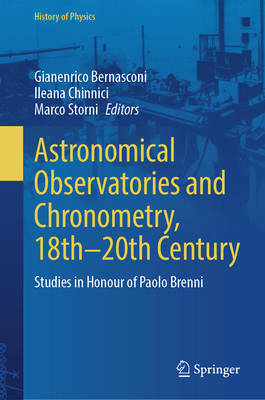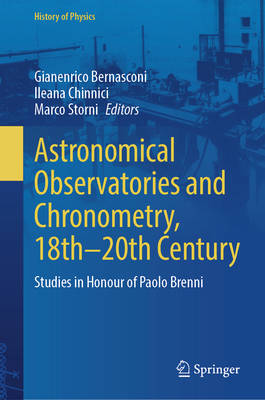
- Afhalen na 1 uur in een winkel met voorraad
- Gratis thuislevering in België vanaf € 30
- Ruim aanbod met 7 miljoen producten
- Afhalen na 1 uur in een winkel met voorraad
- Gratis thuislevering in België vanaf € 30
- Ruim aanbod met 7 miljoen producten
Zoeken
Astronomical Observatories and Chronometry, 18th-20th Century
Studies in Honour of Paolo Brenni
€ 183,45
+ 366 punten
Omschrijving
This book presents research perspectives and open questions on the intersections between astronomy and chronometry. Their study is of crucial importance to the new historiography of observatories. On the one hand, pendulums were fundamental tools for astronomical observation, as measuring time was essential to record the transit of stars and organize astrographic charts. On the other hand, astronomical observation was the method employed for time determination before the introduction of atomic clocks in the mid-20th century. Chapters of this book cohere around 5 sections: starting from the 18th century, and going through the 19th and 20th, the relations between observatories and chronometry (and more generally between practices and materiality) are analyzed from the standpoint of the quest for precision, the certification of timepieces, the acquisition and use of specific apparatus, as well as the circulation of knowledge and of instruments on a global scale.
Specificaties
Betrokkenen
- Uitgeverij:
Inhoud
- Aantal bladzijden:
- 288
- Taal:
- Engels
- Reeks:
Eigenschappen
- Productcode (EAN):
- 9783031958731
- Verschijningsdatum:
- 11/11/2025
- Uitvoering:
- Hardcover
- Formaat:
- Genaaid
- Afmetingen:
- 155 mm x 235 mm

Alleen bij Standaard Boekhandel
+ 366 punten op je klantenkaart van Standaard Boekhandel
Beoordelingen
We publiceren alleen reviews die voldoen aan de voorwaarden voor reviews. Bekijk onze voorwaarden voor reviews.







